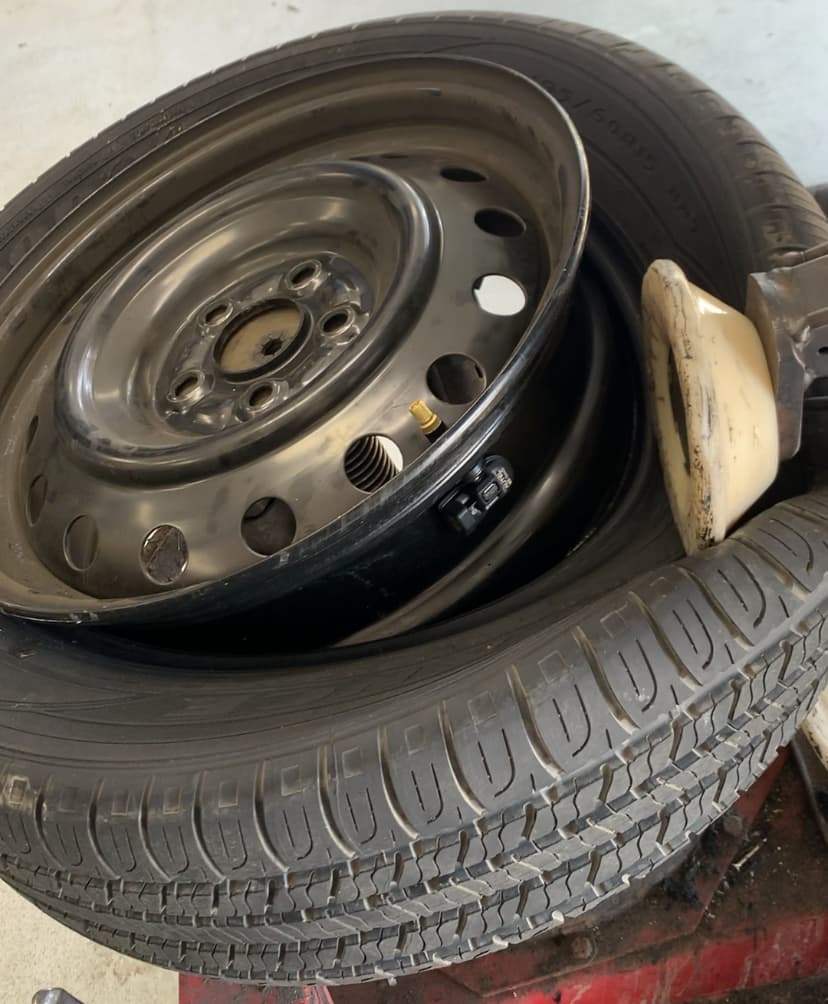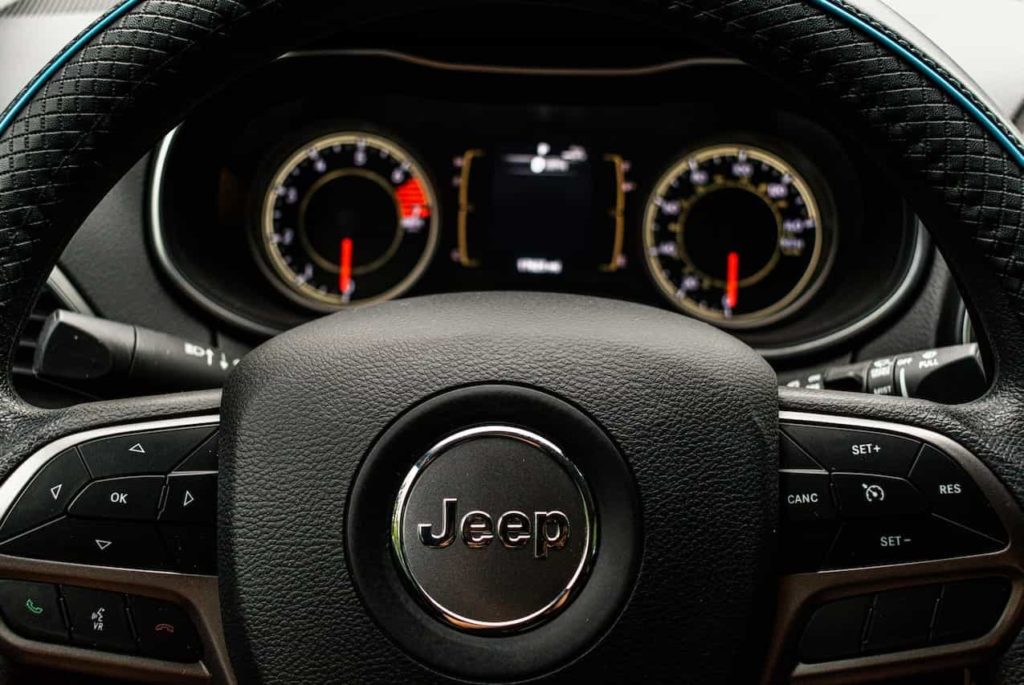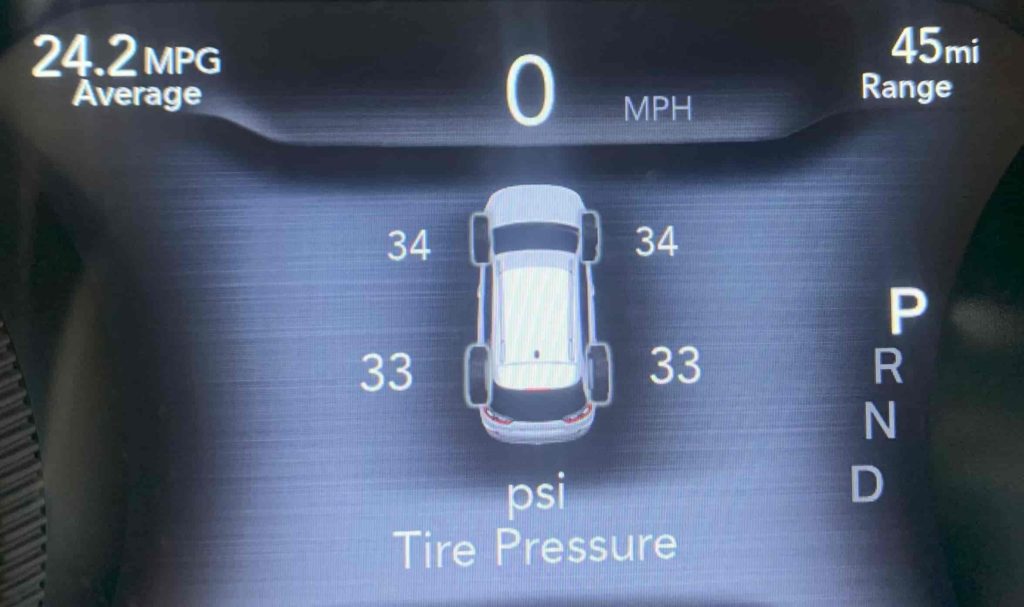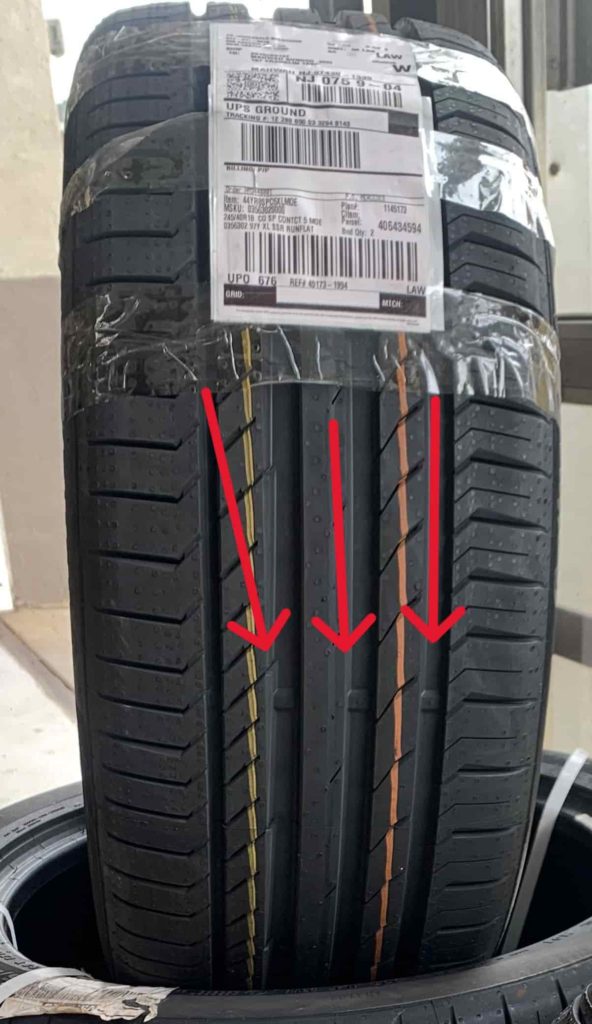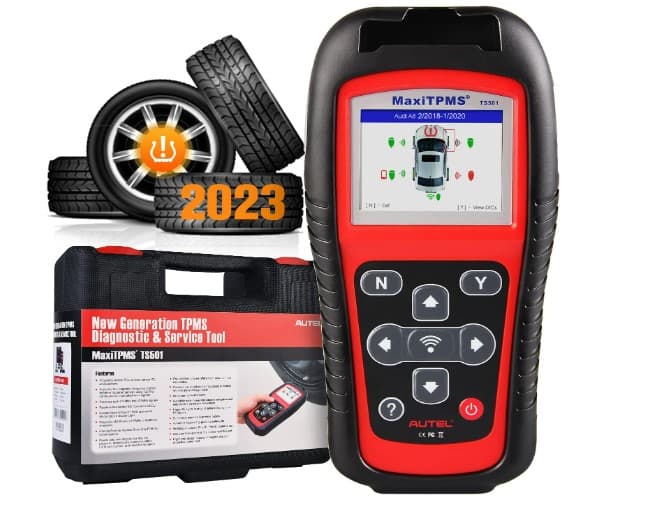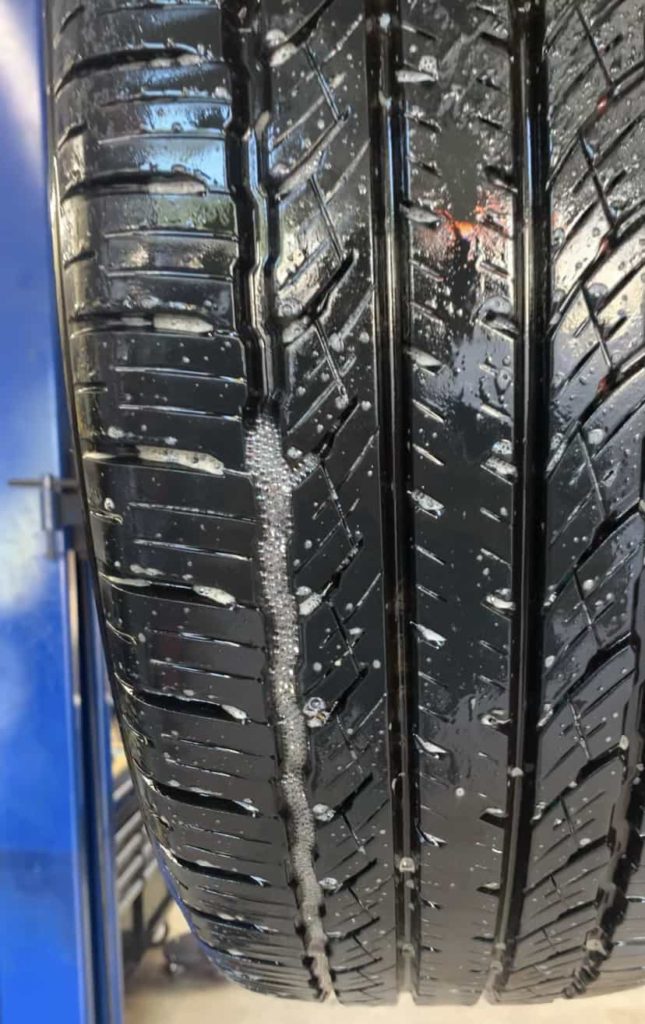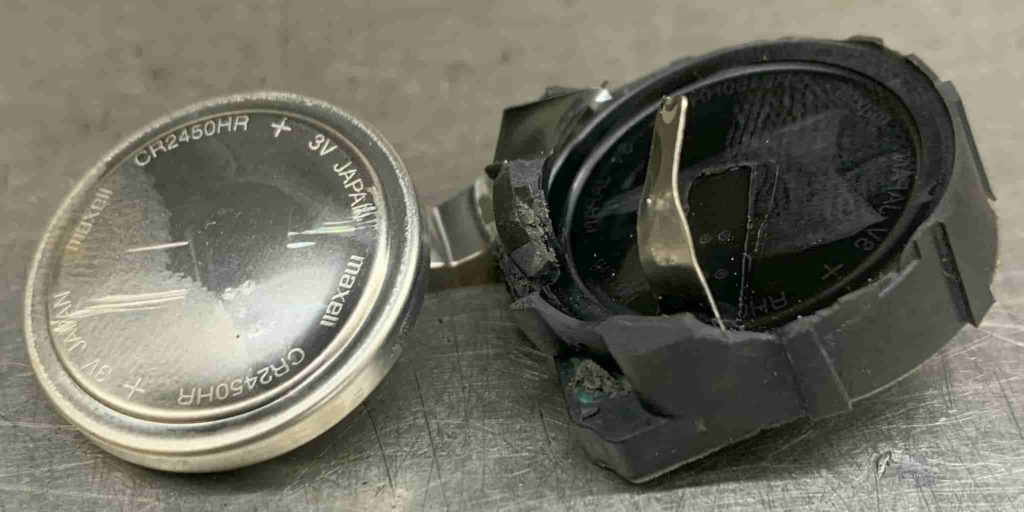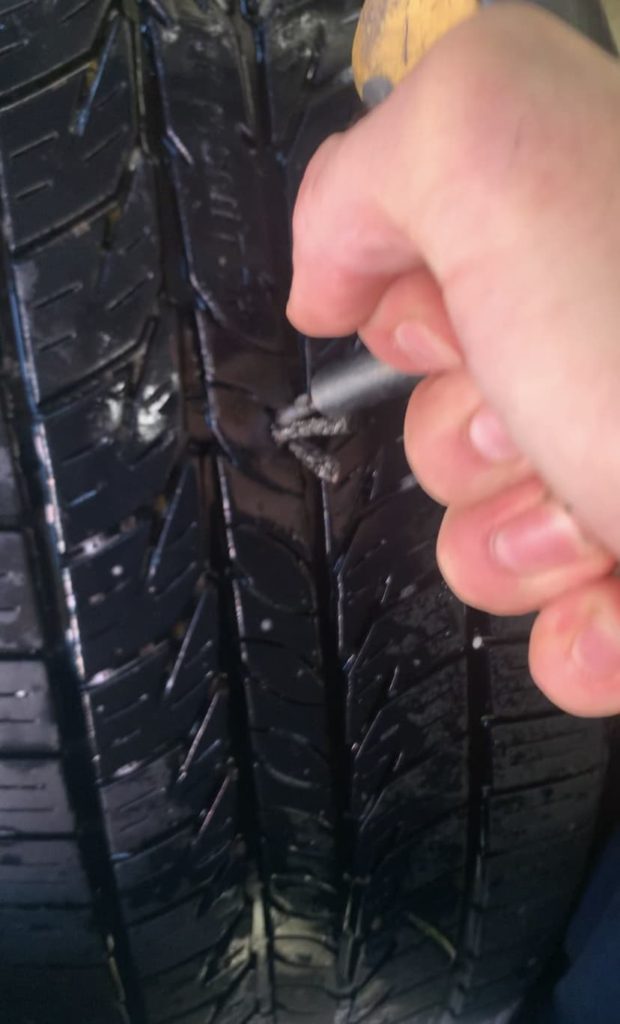Jeep Wagoneer Low Tire Pressure Light Reset Procedure
Check and Adjust Tire Pressure: Make sure the tire pressure is at the recommended cold tire pressure. If the tires are warm, you may need to increase the tire pressure by an additional 4 psi over the recommended cold tire pressure to turn off the TPMS Warning Light. After the tires have cooled, readjust the tire pressure back down to the correct levels.
Drive the Jeep Wagoneer: The system will automatically update and the TPMS Warning Light will extinguish once the updated tire pressures have been received. In order for the TPMS to see the newly adjusted tire pressure the Jeep has to be driven. The vehicle may need to be driven for up to 20 minutes above 15 mph for the TPMS receiver module to receive the new tire pressure information.
How Does the Jeep Wagoneer Tire Pressure System Work?
The Jeep Wagoneer’s Tire Pressure Monitoring System (TPMS) is a state-of-the-art feature designed to keep you informed about the health of your tires. Here’s how it works:
Jeep Wagoneer Tire Pressure Sensors
The sensors in the Jeep Wagoneers Tire Pressure Monitoring System (TPMS) are critical components that continuously measure the air pressure within each tire. These sensors are mounted inside the tire attached to the valve stem. Here’s how they work:
Sensor Construction: Each sensor is made up of a pressure transducer, temperature sensor, battery, microcontroller, and a radio frequency (RF) transmitter. The pressure transducer converts the physical pressure into an electrical signal, while the temperature sensor measures the current temperature within each tire.
Pressure Measurement: The sensors measure the air pressure inside the tire. They can detect minute changes in pressure often within 1 psi or less to provide highly accurate readings.
Battery Life: The sensors are battery-powered and usually last about 5-10 years depending on usage.
Position Detection: The Jeep Wagoneer TPMS can detect the position of each sensor, allowing the vehicle to display the pressure of each specific tire.
Radio Frequency Transmission of Information
The radio frequency (RF) transmission is the method by which the sensors wirelessly communicate the pressure data to the TPMS receiver module. Here’s how it works:
Frequency Range: The sensors typically transmit data using a specific RF frequency. They either transmit on the 315 MHz or 433 MHz range.
Data Transmission Protocol: The sensors use a specific protocol to encode the pressure, temperature, battery status, and other information. This ensures that the TPMS receiver module can interpret the data correctly.
Transmission Intervals: The sensors transmit data at regular intervals while driving or when a significant change in air pressure is detected.
Jeep Wagoneer TPMS Receiver Module
The TPMS receiver module is the central brain of the system. It receives the RF signals from the sensors, interprets the data, and takes appropriate actions. Here’s a detailed look:
Data Interpretation: The module decodes the signals from each sensor, extracting the pressure, temperature, battery status, and other information. It then compares the pressure readings with the Jeep Wagoneer’s recommended levels.
Diagnostics and Error Handling: The receiver module continuously monitors the system for faults such as a failed sensor, communication errors, or low battery warnings. It can store error codes (DTCs) which provide technicians valuable information when diagnosing issues.
Low Tire Warning Light
Tire Light Activation: The low tire pressure warning light switches on and a message is displayed to indicate that the tire pressure is lower than the recommended value. The tire pressure warning light is a yellow exclamation point surrounded by parenthesis. The warning light is activated when the current pressure is 15-20% below the recommended pressure.
What Can Cause the Jeep Wagonner Tire Light to Turn On?
Temperature Fluctuations: Seasonal temperature drops can trigger the warning light.
Punctures and Leaks from Debris: Driving over debris on the road may result in punctures and subsequent air loss in the tire.
Valve Stem Complications: Cracks in dry-rotted rubber valve stems or leaks from metal valve stems can lead to air leaks.
Damage from Impacts: Collisions with potholes or curbs may lead to structural tire issues like tire bubbles, causing a loss of pressure.
Wheel Damage: Pressure loss can occur from wheels that are cracked, corroded, or damaged.
TPMS Sensor Failures: A TPMS malfunction will occur when one or more tire pressure sensors are not working properly.
Post-Rotation or Replacement Confusion: If the TPMS is not reset following a tire rotation or replacement, the warning light may activate and mix up front and rear tire positions.
Altitude-Induced Pressure Changes: Every 1.5 Km change in altitude can cause a 1 Psi change in tire pressure.
Gradual Pressure Decrease: Gradual pressure loss due to factors like permeation, temperature shifts, or dry-rot may trigger the warning light.
Installation Errors: Carelessness during tire installation can result in a broken TPMS sensor.
Radio Frequency Interference: Devices emitting the same radio frequencies as TPMS sensors (315 Mhz or 433 Mhz) may cause incorrect tire readings.
Jeep Wagoneer Tire Fill Alert Feature
The Jeep Wagoneer has a feature called the Tire Fill Alert that assists the user when inflating the tires by letting them know with horn chirps when the tires have reached the correct pressure level.
Tire Fill Alert Activation and Deactivation
Activation: The system activates when it detects an increase in tire pressure while adjusting tire pressure. The ignition must be in the ON/RUN mode with the transmission in PARK.
Deactivation: You can disable or enable the Tire Fill Alert feature in the apps menu of the Jeep Uconnect system on the infotainment display monitor.
How it Works
Horn Beeping: While inflating the tires, the horn will beep once to let the user know when to stop filling the tire once it reaches the recommended pressure. If the tires are being overfilled, the horn will beep three times and continue to beep every five seconds if the user continues to inflate the tire. This is letting the user know to stop filling the tire. The horn will chirp once again when enough air is let out and the correct tire pressure is reached.
Jeep Wagoneer Tires
How Does the Weather Affect the Jeep Wagoneer Tires?
Weather can greatly affect tire pressure in the Jeep Wagoneer, particularly during changes in ambient air temperature. As the temperature drops the air inside the tires contracts leading to a decrease in tire pressure. A general rule of thumb is that for every 10°F change in air temperature, tire pressure will change by about 1 Psi in the same direction. For example, if the Wagoneer’s tire pressure is 32 psi at 68°F and the temperature drops 20°F, the tire pressure will drop to approximately 29-30 psi. This drop in air pressure will cause the low pressure warning light to turn on. Conversely, an increase in air temperature will cause the air to expand which leads to higher tire pressure.
Why is "Cold" Tire Pressure Important?
“Cold” tire pressure refers to the state of the tires when they’ve had ample time to rest and return to ambient air temperature, free from the heat generated by driving. For the tires to be deemed “cold” the Jeep Wagoneer has to have been parked for at least three hours or driven less than a mile after such a resting period. This “cold” reading is considered the baseline and provides the most accurate measurement of tire pressure because it’s unaffected by the temporary inflation from driving. It’s the standard against which tire pressures are often set and checked.
How to Check the Jeep Wagoneer Tire Pressure
Find the Recommended Pressure: Check the white and yellow sticker on the driver side door jamb to find the Jeep Wagoneer recommended tire pressure.
Get a Tire Pressure Gauge: We suggest using a digital tire pressure gauge for their ease of use and accuracy.
Wait for Tires to Cool: Wait at least three hours after driving to prevent overfilling and inaccurate tire readings.
Remove the Valve Cap: unscrew, remove and put the valve caps somewhere safe.
Check the Pressure: Press the tire pressure gauge onto the valve stem. You might hear a slight hiss as you press down before the reading comes up. Check the pressure on the gauge and compare it to the recommended pressure.
Adjust If Necessary: If the pressure is too low, add air using an air compressor until you reach the recommended pressure. If it’s too high, gently press the metal stem in the center of the valve to release some air and then check the pressure again.
Replace the Valve Cap: Don’t forget to screw the valve cap back on the valve stem tightly to prevent any dirt getting in.
Repeat for All Tires: Check all the tires including the spare using the same steps.
2023 Jeep Wagoneer Wheel Size and Tire Pressure
TIRE SIZE | FRONT PSI | REAR PSI |
275/55R20 | 36 | 36 |
285/45R22 | 40 | 40 |
SPARE | 60 | 60 |
Jeep Wagoneer Spare Tire
Before installing the spare tire on the 2022 Jeep Wagoneer, be sure to put the vehicle suspension in “tire jack mode” before jacking any of the wheels off the ground. Do this by going to Vehicle > Settings > Suspension > Tire Jack Mode.
Tire Tread Wear Indicators
When the tire tread is worn down to the tread wear indicator, the tire needs to be replaced. Tread wear indicators appear as bands in the tire tread when the tread depth becomes 1/16 of an inch or less. They are molded into the bottom of the tread grooves and serve as a visual indicator without having to use a tire tread depth gauge.
Side Effects of Driving Jeep Wagoneer With Low Tire Pressure
Driving the Jeep Wagoneer with low tire pressure can lead to several potential side effects. Here’s an overview of what might happen:
Reduced Fuel Efficiency: Low tire pressure means that the tires have more surface area in contact with the road which leads to increased friction and resistance. This makes the engine work harder to move the SUV and results in decreased fuel efficiency.
Poor Handling: Tires with low pressure may not respond as quickly or accurately to steering inputs. This can make the Jeep Wagoneer feel sluggish or unresponsive and may increase the risk of losing control.
Increased Tire Wear: The increased friction and heat generated by underinflated tires will cause them to wear out more quickly.
Potential Damage to the Vehicle: Continuously driving with low tire pressure can lead to damage to the wheels and suspension system. The uneven wear and increased strain on these components can lead to premature wear and costly repairs.
Environmental Impact: The reduced fuel efficiency means that the vehicle is burning more fuel for the same distance traveled as well as replacing tires prematurely that both lead to increased emissions and a larger carbon footprint.
Troubleshooting & Diagnosing Jeep Wagoneer Tire Light
The following are 5 potential solutions to turn off your Jeep Wagoneer low tire pressure warning light:
Solution 1: Is There a Tire Leak?
The number one reason for the Jeep Wagoneer low tire pressure light being on is having low tire pressure because of a leak. If you inflate the under-pressurized tire and the light turns off or resets, only to come back on within a brief period—whether it’s minutes, hours, or days—this is a compelling indication that there’s a leak in the tire or wheel.
Solution 2: Erase the TPMS DTC
Should the tire warning light continue to stay on and other methods fail to resolve the issue, it might be necessary to reset the computer/ECU in the Jeep Wagoneer. This can be achieved by disconnecting the main 12 volt battery (always disconnect the negative terminal first). This action cuts off power to the Engine Control Unit (ECU), wiping all temporary DTC error codes including the one triggering the tire pressure light. After reconnecting the battery the Jeep Wagoneer will initiate a “relearning” phase. To finalize this stage drive at a speed of 50 Mph for a minimum of 30 minutes. If the tire light goes out following this process but comes back on after driving, it likely means there is a tire pressure sensor low on battery.
Solution 3: Find Which Tire Sensor has a Low Battery
If the tire pressure light turns on and you think it might be due to a weak battery in one of the tire pressure sensors (indicated by the tire light blinking or flashing and then staying on), you can examine the sensors using a TPMS diagnostic tool. This method is typically the same regardless of what brand TPMS diagnostic tool you use. Place the TPMS tool near the valve stem and select the “test” or “trigger” function. After evaluating all four sensors, the tool will provide an overview of the battery state for each one. If any sensor shows a “low” status or fails to provide a status report, that TPMS sensor needs to be replaced.
Solution 4: Why Does the Tire Light Turn On and Then Off On Its Own?
If the tire pressure light in your Jeep Wagoneer comes on when you start the car but turns off as you begin driving, it means that the tire pressure is just below the required pressure level. This scenario can occur when the tires are cold, such as in the morning or before the SUV has been driven that day, and then warm up as you drive. To resolve this issue, check and adjust all 4 tires to the recommended cold pressure while the tires are cold.
Solution 5: Overinflate the Tires
One final solution if the low tire pressure light won’t turn off is to intentionally overfill the tires. To prompt the sensor to begin interacting with the TPMS receiver module, first release approximately 10 or 15 Psi from the tire, then inflate the tire by an extra 4 to 5 Psi. With the tire overinflated, drive your Jeep Wagoneer for a few miles at speeds above 15 Mph. Once the tire light extinguishes, you should then readjust the tire pressure back to the cold recommended values.
How to Find Where a Tire is Leaking From
Start by checking the air pressure of all 4 of the Jeep Wagoneer tires to identify the one that is not properly inflated. Inflate the underinflated tire to 35 Psi. Next, take a spray bottle filled with a mixture of water and soap (or Windex) and liberally soak the entire tire with it. Make sure to thoroughly drench it, don’t skip the bead area and the valve stem, ensuring that the whole surface of the tire is wet. Let it sit for a short time, then carefully inspect the tire for small bubbles appearing on its surface. If the tire has been well-soaked with the soapy mixture and there is a leak, the escaping air will create tiny bubbles at the source of the leak. Find the bubbles, and you’ve found the leak!
Jeep Wagoneer Tire Pressure Sensor Batteries
Each wheel of the Jeep Wagoneer is equipped with its own tire pressure sensor. These sensors are each powered by an integrated battery, similar to those found in key fobs or wristwatches. Encased in a plastic housing and directly connected to the sensor’s electronics, these batteries are not replaceable individually. Over a span of 5 to 10 years the batteries may become drained or weakened, necessitating the replacement of the entire sensor with a new one (the batteries cannot be replaced). The lifespan of the battery can be influenced by various factors such as driving conditions, changes in weather, and the frequency and length of your trips.
Common Tire Questions
Why is the Tire Light Flashing?
A fault in the Jeep Wagoneer’s tire pressure system is identified when the TPMS receiver module loses connection with one or more of the tire pressure sensors. When this happens the low tire pressure warning light (symbolized by a yellow exclamation mark) will flash for about a minute and then stay on. The information display screen will also read “SERVICE TPM SYSTEM.” The problem might stem from a missing tire pressure sensor in one of the wheels, a low or dead sensor battery, or even driving with the spare tire on. If a tire pressure sensor battery is dead or non-existent, it cannot communicate with the TPMS receiver module. A flashing tire light does not point to a problem with the air pressure itself but rather with the tire pressure monitoring system.
Is It Safe to Drive the Jeep Wagoneer With the TPMS Light On?
Driving your Jeep Wagoneer with the tire pressure warning light on is not recommended. To gauge whether it’s safe to proceed, you must first uncover the reason behind the warning. Is there a nail or screw stuck in the tire tread causing an air leak? Is the air leak slow or fast? Pinpointing the exact problem will guide you in determining if it’s safe to drive and, if so, for how long.
Are Tire Plugs Safe to Use to Fix Tires?
Yes! I have personal experience repairing hundreds of tires with tire plugs and I can attest to their reliability. I’ve relied on them for my own vehicles as well as for those belonging to my family. Constructed from robust rubber-like materials, tire plugs are engineered to withstand substantial pressure and temperature changes inside the tire. When correctly inserted a tire plug can potentially last for the entire life of the tire. It’s crucial to recognize that tire plugs should never be used on the tire’s sidewall.
Are Tire Sealants Safe to Use With TPMS Sensors?
Tire sealants are designed to offer a temporary fix for flat tires on your Jeep Wagoneer and should ideally be used only in emergency scenarios. Their application might damage both the tire pressure sensors and the tire if the sealing liquid is not properly removed afterward. We advise to avoid using tire sealants unless absolutely necessary. If tire sealants are used, bring the Jeep Wagoneer to a tire professional and have them clean out the tire and check the sensor’s functionality.
Everything in this article is applicable to all Jeep Wagoneers models and versions including the Jeep Wagoneer, Jeep Grand Wagoneer, Jeep Wagoneer Series II, Carbide, Series III, and Obsidian.
Please note that this blog post contains Amazon affiliate links. This means that if you make a purchase through one of these links, we at TPMSRESET.COM may earn a small commission at no extra cost to you. We only recommend products that we personally use and believe in. Thank you for supporting us.

